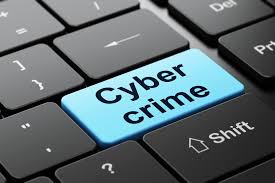This Article has been written by Yukta Lohani of University of Allahabad.
INTRODUCTION:
Cyber-crime deals with the crimes committed with the help of internet, computer system,
cyberspace and matters related to I.T.
1st Cyber law to be enacted was:
“THE COMPUTER FRAUD AND ABUSE ACT OF 1986. “
There are some instances where Cyber-crime is done with the intention of generating
profits. E.g.: ransomware attacks, email and internet fraud, identity theft etc.
In India cyber-crimes are covered by IT Act, 2000 & IPC 1860.
It is an uncontrollable evil having its base in the misuse of growing dependence on
computers in modern life.
HISTORY AND EVOLUTION
During the period of 1950’s, it would be an astonished feeling for everyone who uses
palmtops and microchips today, to know that the first successful computer was built
and the size of the computer was so big that it takes the space of entire room and they
were too expensive to operate.
IBMs came into being wherein it introduced its stand-alone “personal computer” in
1981 and exposing many to the rewards of quick data access and manipulation that,
up to that time, had been realized by few. The personal computers become cheaper
and became a household item at the start of 21st century in India. The Internet was
first started by the US department of defense, after World War II with the idea to
have a network which could work in the event of disaster or war and securely
transmit information. The First Network was known as ARPANET, with the
development of Transmission Control Protocol/Internet Protocol, World Wide Web
and Hypertext the internet become rage all over the world.
In India, internet services started around 1995 and is 2nd largest in terms of internet
users after China with 33.22% people internet users.
However, the process of criminalization of human behavior judged to be harmful.
And the first recorded cybercrime took place in 1820.
In the case of computer crime, legislators grew increasingly attentive in the 1980s as businesses
became more dependent upon computerization and as catalyst event cases exposed significant vulnerabilities to computer crime violations. Criminals
can now easily encrypt information representing evidence of their criminal acts, store the
information and even transmit it with little fear of detection by law enforcement. Due to the
extraordinary impact of the Internet, a computer crime scene can now span from the
geographical point of the victimization (e.g., the victim’s personal computer) to any other point
on the planet, further complicating criminal investigative efforts.
With the advancement of technology, the threats of becoming a Cyber victim has also increased
as the Cyber criminals have opened up lots of new doors for cyber criminals.
DEFINITION OF CYBER CRIME
No such exact definition of cybercrime in any statues is mentioned.
According to:
Dr. Debarati Halder and Dr. K. Jaishankar cyber-crimes are:
“Offences that are committed against individuals or groups of individuals with a criminal
motive to intentionally harm the reputation of the victim or cause physical or mental harm, or
loss, to the victim directly or indirectly, using modern telecommunication networks such as
Internet (Chat rooms, emails, notice boards and groups) and mobile phones (SMS/MMS)”.
NATURE AND SCOPE OF CYBER CRIME
Crime is a socially correlated phenomenon. No matter how much we try, we cannot
experience a society without cybercrime. In actual sense, when we are not yet able to
control the crime rate to the desirable minimum in the real world, how would it be
possible to curb the same in the virtual world, as the same is comparatively more
unreal, everlasting and legally less controllable. However, with the time, nature and
scope and definition of crime changes in a given society. Crimeless society is a myth
and crime cannot be segregated from a society. Thus, the nature of the crime depends
upon the nature of a society.
The advancement of the technology has produced new socio-economic and political
problem in the society and instead of helping the state in the controlling the problem
it has created new complex situation which is difficult to understand and even more
difficult to apply current law to face the situation.
TYPES OF CYBER CRIME
- Smishing
- Cyberbullying
- Cyberstalking
- Cyber grooming
- Online job fraud
- Online sextortion
- Phishing
- Vishing
- Smishing
- Credit card fraud or debit card fraud
- Impersonation and identity theft
Child pornography or child sexually abusive material (CSAM):
In its simplest sense, child sexual abuse materials (CSAMs) include any material
containing sexual images in any form, wherein both the child being exploited or
abused may be seen. There is a provision in Section 67(B) of the Information
Technology Act which states that the publication or transmission of material
depicting children in sexually explicit acts in an electronic form is punishable.
Cyberbullying:
A cyberbully is someone who harasses or bullies’ others using electronic devices like
computers, mobile phones, laptops, etc. Cyberbullying refers to bullying conducted
through the use of digital technology. The use of social media, messaging platforms,
gaming platforms, and mobile devices may be involved. Oftentimes, this involves
repeated behavior that is intended to scare, anger, or shame those being targeted.
Cyber stalking:
Cyberstalking is the act of harassing or stalking another person online using the
internet and other technologies. Cyberstalking is done through texts, emails, social
media posts, and other forms and is often persistent, methodical, and deliberate.
Cyber grooming:
The phenomenon of cyber grooming involves a person building a relationship with a
teenager and having a strategy of luring, teasing, or even putting pressure on them to
perform a sexual act.
Online job fraud:
An online job fraud scheme involves misleading people who require a job by
promising them a better job with higher wages while giving them false hope.
On March 21, 2022, the Reserve Bank of India (RBI) alerted people not to fall prey to
job scams. By this, the RBI has explained the way in which online job fraud is
perpetrated, as well as precautions the common man should take when applying for
any job opportunity, whether in India or abroad.
Online sextortion:
The act of online sextortion occurs when the cybercriminal threatens any individual to
publish sensitive and private material on an electronic medium. These criminals
threaten in order to get a sexual image, sexual Favour, or money from such
individuals.
Phishing:
Fraud involving phishing is when an email appears to be from a legitimate source but
contains a malicious attachment that is designed to steal personal information from the user such as their ID, IPIN, Card number, expiration date, CVV, etc. and then
selling the information on the dark web.
Vishing:
In vishing, victims’ confidential information is stolen by using their phones.
Cybercriminals use sophisticated social engineering tactics to get victims to divulge
private information and access personal accounts.
Smishing:
As the name suggests, smishing is a fraud that uses text messages via mobile phones
to trick its victims into calling a fake phone number, visiting a fraudulent website or
downloading malicious software that resides on the victim’s computer.
Credit card fraud or debit card fraud:
In credit card (or debit card) fraud, unauthorized purchases or withdrawals from
another’s card are made to gain access to their funds. When unauthorized purchases
or withdrawals of cash are made from a customer’s account, they are considered
credit/debit card fraud. Fraudulent activity occurs when a criminal gains access to the
cardholder’s debit/credit number, or personal identification number (PIN). Your
information can be obtained by unscrupulous employees or hackers.
Impersonation and identity theft:
A person is impersonated or exposed to identity theft when they make fraudulent use
of an electronic signature, a password, or any other unique identifier on another
person’s behalf.
Cyber-crime laws in India:
- IT ACT, 2000
- IPC, 1860
- IT RULES
- COMPANIES ACT, 2013
- CYBERSECURITY FRAMEWORK
Cyber Terrorism:
“Cyber terrorism is the convergence of cyberspace and terrorism. It refers to unlawful
attacks and threats of attacks against computers, networks and the information stored
therein when done to intimidate or coerce a government or its people in furtherance of
political or social objectives. Further, to qualify as cyber terrorism, an attack should
result in violence against persons or property, or at least cause enough harm to
generate fear. Attacks that lead to death or bodily injury, explosions, or severe
economic loss would be examples. Serious attacks against critical infrastructures
could be acts of cyber terrorism, depending on their impact.
According to NATO (2008), cyber terrorism is “a cyber-attack using or exploiting computer or
communication networks to cause sufficient destruction to generate fear or intimidate a society
into an ideological goal.
HACKING:
Hacking is labelled as amongst the most serious of all cyber-crimes. It is said that hacking erodes
the faith of people in information technology and the Internet. Hacking a computer system has
been projected as a menace requiring harsh laws to act as deterrents. Such a general projection is
somewhat misconceived.
Some case laws on Cyber Crime:
A victim in the case Kalandi Charan Lenka v. the State of Odisha (2017) has received a series
of obscene messages from an unknown number that has damaged her reputation. The accused
also sent emails to the victim and created a fake account on Facebook containing morphed
images of her. The High Court, therefore, found the accused prima facie guilty of cyberstalking
on various charges under the IT Act and Section 354D of IPC.
In Anil Kumar Srivastava v. Addl Director, MHFW (2005), the petitioner had forged
signed the signature of the AD and had then filed a case that made false allegations against the
same individual. Due to the fact that the petitioner also attempted to pass it off as a genuine
document, the Court held that the petitioner was liable under Sections 465 and 471 of the IPC.
CONCLUSION:
With the advancement in technology, disturbing elements are appearing on the dark web that is
disturbing. The Internet has become a tool of evil deeds that are exploited by intelligent people
for evil motives and sometimes for financial gain. Thus, at this point in time, cyber laws come
into the picture and are important for every citizen. Due to the fact that cyberspace is an
extremely difficult territory to deal with, some activities are classified as grey activities that
cannot be governed by law.
There is a need for legislators to take extra precautions to keep ahead of the imposters so that
they can act against them as soon as they arise.
- AIBE 20 (2025) Mock Test Series: Set 2 (100 Questions with Answers)by Aayush Anand & LT Team
- AIBE 20 (2025) Full-Length Mock Test: 100 Questions with Answer Keyby Aayush Anand & LT Team
- CLAT 2026 Admit Card Released: Download Link & Exam Day Instructionsby Aayush Anand & LT Team
- Weekly Legal News Roundup (Nov 17-23, 2025): Top Supreme Court & High Court Judgmentsby Aayush Anand & LT Team
- Justice Surya Kant Takes Charge: A New Era for the Indian Judiciaryby Aayush Anand & LT Team


4 Responses
Kya ye class Hindi medium me ho sakta hai kya
Hindi medium me ho sakta hai kya ye cyber crime ka class me law
I dugg some of you post as I thought they were invaluable very helpful
glad to be one of many visitors on this awe inspiring internet site : D.